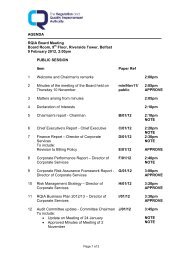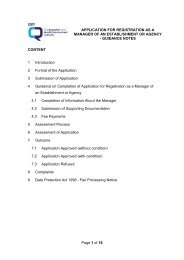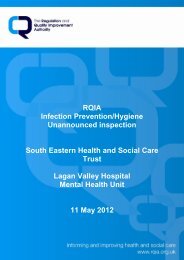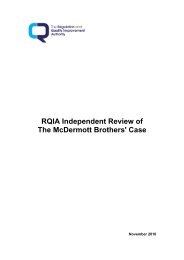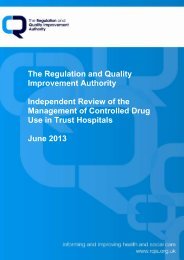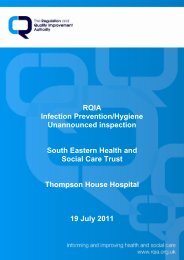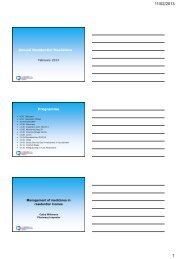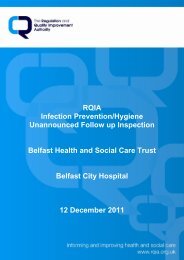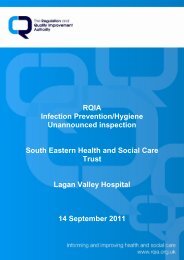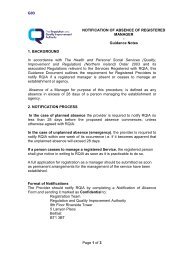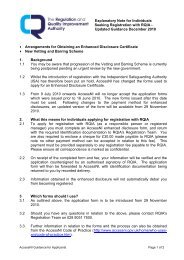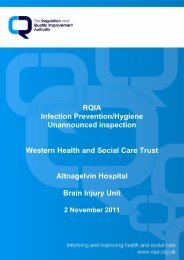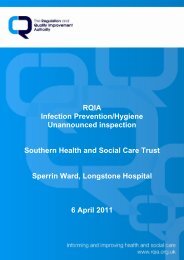Downe Hospital, Downpatrick - 15 February 2011 - Regulation and ...
Downe Hospital, Downpatrick - 15 February 2011 - Regulation and ...
Downe Hospital, Downpatrick - 15 February 2011 - Regulation and ...
Create successful ePaper yourself
Turn your PDF publications into a flip-book with our unique Google optimized e-Paper software.
4.0 Announced Inspections<br />
The purpose of the announced inspection of the SEHSCT was to<br />
assess <strong>and</strong> confirm organisational <strong>and</strong> governance arrangements in<br />
place <strong>and</strong> to ensure that they have been effectively implemented.<br />
4.1 Announced Inspection Process<br />
Announced inspections commence with a process of self-assessment,<br />
include an onsite inspection <strong>and</strong> end with the publication of a report.<br />
The inspection flowchart is attached in Section 17.<br />
4.2 Self Assessment<br />
The trust is asked to provide a summary of how they comply with the<br />
criteria set out in St<strong>and</strong>ard 1 of the draft Regional Healthcare <strong>and</strong><br />
Cleanliness St<strong>and</strong>ards. The self assessment is signed by the Chief<br />
Executive to confirm that the assessment accurately reflects the<br />
arrangements in place within the trust to ensure compliance.<br />
4.3 Pre-Inspection Analysis<br />
The completed self-assessment <strong>and</strong> documentation is reviewed by<br />
RQIA. This analysis provides RQIA with an initial framework of<br />
evidence which is validated through the inspection process.<br />
4.4 Onsite Inspection<br />
The announced inspection process enables RQIA to engage directly<br />
with trust senior <strong>and</strong> middle management staff in relation to infection<br />
prevention <strong>and</strong> control <strong>and</strong> environmental cleanliness issues. This is<br />
followed by an inspection of ward environments using the draft<br />
Regional Healthcare Hygiene <strong>and</strong> Cleanliness audit tool. The<br />
inspection process involves observation, discussion with staff, <strong>and</strong><br />
review of relevant documentation.<br />
For this inspection the team consisted of three inspectors, from RQIA’s<br />
Infection Prevention/Hygiene Team <strong>and</strong> one peer reviewer. A lead<br />
inspector was responsible for co-ordinating the inspection <strong>and</strong> ensuring<br />
the team was in agreement about the findings reached. Membership of<br />
the inspection team is outlined in Section 13.<br />
4.5 Feedback <strong>and</strong> Report of the Findings<br />
The process concludes with a feedback of key findings to trust<br />
representatives, highlighting examples of best practice <strong>and</strong> high risk<br />
identified during the inspection. The trust representatives attending the<br />
feedback session is outlined in Section 13.<br />
8



